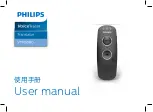
Section 17 — Sequencing/MIDI Applications
ASR-10 Musician’s Manual
6
MIDI Sequencer Applications
Some Important Points about MULTI Mode
• Each of the eight Instrument•Sequence Tracks is completely independent and polyphonic.
The ASR-10’s dynamic voice allocation means that at any moment, each track can play all of
the ASR-10’s voices, if it needs them. If all voices are in use and a track needs a voice, it will
“steal” the voice from the oldest note playing.
• In MULTI mode it doesn’t matter what instruments are selected or stacked on the front panel.
Which instruments will play depends entirely on what MIDI channel(s) the data is received
on.
• Different MIDI receive channels must be selected for each Instrument•Sequence Track that
you want to receive via MIDI. If more than one sequence track is set to the same MULTI IN
MIDI CHAN, only the lowest numbered Instrument•Sequence Track will receive via MIDI.
• In MULTI mode, program changes received by a given Instrument•Sequence Track on its
MIDI channel will cause the ASR-10 to try to load the same numbered instrument disk file into
that Instrument•Sequence Track location, replacing the instrument that is currently loaded in
that location.
• When using a MIDI sequencer, it’s generally a good practice to assign a certain MIDI channel
(or channels) to each instrument in your rig and always leave them set to that channel.
• When recording in MULTI mode, the SEQ REC SOURCE parameter on the Edit/Seq•Song
page must also be set to MULTI.
Synchronizing to an External MIDI Clock Source
When you set the CLOCK SOURCE= MIDI on the Edit/Seq•Song page, the ASR-10 will sync to
incoming MIDI clocks from a remote device. The MIDI indicator light will flash and the display
will show WAITING… Recording will begin with the first MIDI clock received after a MIDI Start
command. If the Stop•Continue button is pressed before a MIDI Start command is received, the
ASR-10 waits 5 seconds before stopping.
















































